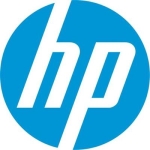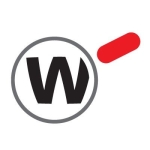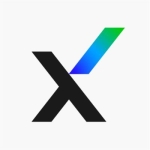What is our primary use case?
I use Check Point Harmony Endpoint in my company to secure the endpoint devices, including computers, servers, and every single endpoint in the environment.
How has it helped my organization?
Check Point Harmony Endpoint offers customers enterprise-level security for all their devices, including servers, laptops, and desktops. The IT personnel can ensure that with the product, all of the devices in an environment are protected with Check Point's enterprise-based solution. The customers who buy the product need not worry about their devices being exposed to threats. In fact, if you check the reports for Check Point in Gartner Magic Quadrant, you will see that the reports are all related to Check Point's endpoint security solutions. Customers try to get information on the value they can derive, along with the other potential prospects in the market, before trying to get or onboard Check Point Harmony Endpoint in their environment.
For IT personnel, Check Point Harmony Endpoint is easy to manage since they don't need to have any expert in order to deploy or monitor devices with the help of the product, and it also allows you to try out different actions on different devices. Whenever there is an attack on any device, Check Point Harmony Endpoint has the capability to isolate the affected device from the environment. Suppose there is an attack on one computer. In that case, the security of the other computers operating in the same environment is compromised, so Check Point Harmony Endpoint isolated the affected computer and notified the required department in the company to look into it while allowing for the other computers to work properly. The product offers good value to the companies that deploy it in their environment.
What is most valuable?
I would have to describe what I feel is valuable in Check Point as a whole. Check Point provides users with a central point from where they can manage all the devices across a workplace. Whether users use Check Point Harmony, Check Point Quantum, or Check Point CloudGuard, they don't have to log into different portals or solutions since they can manage everything from one central point. I like the fact that products from Check Point are very easy to deploy. Even if a user has 1,000 endpoints in an environment, Check Point can take care of the deployment in minutes. Check Point Harmony Endpoint is a very easy solution to deploy and requires very little maintenance or technical expertise.
What needs improvement?
I would like to see improvements in Check Point Harmony Endpoint in general because some people use it since it is available at a competitive price. Due to the competitive pricing strategy of Check Point Harmony Endpoint, it is not considered to be a good product, like Fortinet, Palo Alto, or F5. Check Point Harmony Endpoint needs to consider that people should feel that Check Point doesn't compromise on quality even though the price at which Harmony Endpoint is offered is good. People who claim that Check Point Harmony Endpoint is a cheap product don't necessarily mean that it is not a good solution. Fortinet is a very expensive product that offers good value to its customers. If Check Point can work on the value proposition it offers to customers and make them understand that even though the solution is affordable, it is not a bad solution compared to its competitors, then it would be fantastic. The potential customers can opt for Check Point products, considering that they are offered good products at the cheapest price in its categories. It is important for Check Point to ensure that people don't have a wrong perception about the products it has launched in the market.
I don't think there are any features I would like to include, and the tool offers updates when compared with the products from competitors, which I think is a good way to do it. The only challenge is that for many organizations where there is an MDM solution in the environment and an endpoint security tool, my company needs to educate such organizations to convey the message that endpoint and MDM solutions are different products for different purposes, so they are not the same. If Check Point Harmony Endpoint can incorporate MDM into the solution, it can be a fantastic enhancement. Customers need not buy endpoint and MDM solutions if both are made available together in Check Point Harmony Endpoint. My company will have to put extra effort into educating the customers and making them understand the two different solutions. MDM is used to manage your mobile devices, and Check Point Harmony Endpoint is the security for your endpoints.
For how long have I used the solution?
I have been using Check Point Harmony Endpoint for over three years.
What do I think about the stability of the solution?
It is a stable solution. My company has not received any complaints regarding the product's stability from our customers who use the solution.
What do I think about the scalability of the solution?
It is a very scalable solution.
How are customer service and support?
My company had to contact Check Point's technical team for the installations that my company carried out when we had to deal with around 40 devices that had firewalls from Check Point, which had reached the end of life. For Check Point Harmony Endpoint, my company never had any reason to contact Check Point's technical team.
Which solution did I use previously and why did I switch?
Starting with the pros, I would say that Check Point Harmony Endpoint provides value for money. After purchasing Check Point Harmony Endpoint, you need to consider the fact that the cost you pay for the solution and the value you derive from the product is very proportional. When it comes to Check Point Harmony Endpoint, I can say that a user does not pay high prices for a poor solution. A user pays a decent fee for a very good product. I think the first pro is that the value you get from the solution is made available at a very competitive price. The product is seamless and easy to use. With the centralized portal, a user can manage all Check Point products, including Check Point Harmony, Check Point Quantum, or Check Point CloudGuard, from a single point, which is also a fantastic pro for Check Point. Regarding the cons of the solution, I would say that it stems from people's perception of the solution since they feel that an affordable product may not be good enough. There is a need to work around people's wrong perception of Check Point products. Still, I don't know if such a negative perception is something that is widespread across the globe or whether it is exclusive to Nigeria or the markets in Africa. Check Point needs to work in areas like branding and other value propositions to make products stand out in the market despite the solutions being more affordable than the ones offered by competitors.
How was the initial setup?
The product's initial setup phase was straightforward. The product's deployment was done in minutes, so it didn't take long, as there was no need to do any special configurations. There was no need for the people involved in the deployment to have any special skills. The deployment process was seamless and straightforward. The product's deployment was never an issue. The IT department need not worry too much about whether they need to learn new skills to manage the product as it is easy to use and deploy and a product that can be used seamlessly. The product's deployment takes around 30 to 40 minutes.
I work with the solution's SaaS version.
What other advice do I have?
I don't think Check Point Harmony Endpoint is difficult to maintain. I think there is a possibility of scheduling your updates in Check Point Harmony Endpoint, even if you want it to happen outside your working hours, like somewhere between eight o'clock in the evening and midnight. I don't think maintenance is stressful because it can be scheduled outside of working hours.
I would recommend others to use the product since the deployment process is seamless, so you don't need any specialized skills to use the portal provided by Check Point to monitor your devices. There are no specialized skills required to support or maintain the solution. It is also very easy to implement the product. You can keep a tab using the centralized portal offered by the product. In general, the product makes the life of the IT department easier since you need not worry about a lot of the technical stuff related to the solution.
From my point of view, I need to put in extra effort to convince my company's customers to use the solution. In terms of the features and the product's ability to deliver the promised value to its customers, especially when compared to other solutions in the market, I rate the overall product an eight out of ten.
Disclosure: My company has a business relationship with this vendor other than being a customer. Reseller























